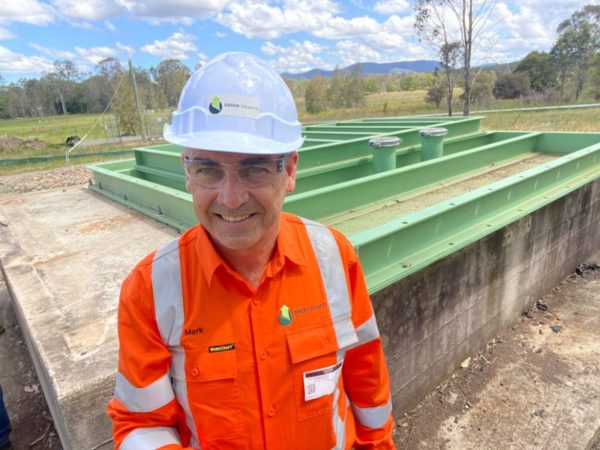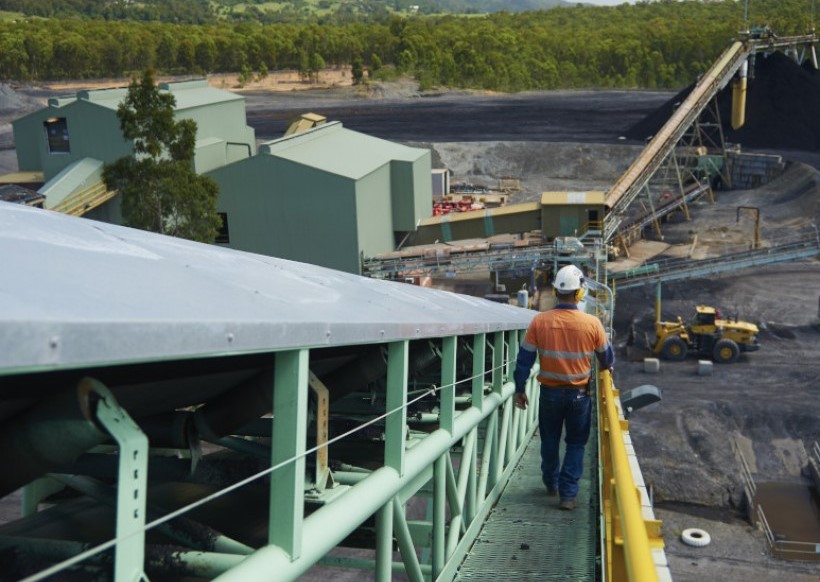Green Gravity and international engineering heavyweight GHD have executed a memorandum of understanding (MoU) to develop new applications for the startup’s storage solution, which moves heavy weights vertically in legacy mine shafts to capture and release the gravitational potential energy, providing long-duration storage to the grid.
In a wide-ranging partnership, Wollongong-based Green Gravity and GHD will collaborate on technical engineering, policy, regulatory matters and electricity grid connectivity practices.
Green Gravity founder and Chief Executive Mark Swinnerton said the partnership marked the next crucial stage in the commercialisation of the company’s “home-grown” gravitational energy storage technology.
“Recent escalating power prices declared in the Federal Budget demonstrate how important it is for innovative Australian companies to commercialise new technology quickly,” he said. “Solving the power pricing challenge requires collaboration across sectors, innovation, and determination. We are up for the challenge.”

Image: Green Gravity
Green Gravity’s technology harnesses the fundamental principles of gravity and kinetic energy to store and dispatch energy by lifting and lowering ultra-heavy weights in legacy mine shafts. As the weights are lowered, the cable holding the weights passes through a device called a ‘winder’, which then turns a motor.
The company aims to raise the weights when excess renewable energy is available and lower the weights to satisfy demand; either for industrial purposes or simply because prices in the electricity grid make it an attractive time to dispatch.
The concept is similar to other gravity energy storage technologies, but Swinnerton believes the use of old mine shafts, rather than purpose-built tall towers, will be his competitive advantage.
“Green Gravity’s energy storage technology represents a breakthrough in the search for economic long-duration storage of renewable energy,” he said. “By re-using mining assets, costs can be kept low. By using gravity as the fuel, we dispense with consuming the critical water, land, and chemicals which other storage technologies rely on.”
The signing of the agreement with GHD follows the announcement that Green Gravity will work with Australian coal producer Yancoal to explore the potential application of its energy storage technology at the Austar coal mine site near Cessnock, New South Wales.

Image: Green Gravity
Austar has been idle for more than two years and Swinnerton said decommissioned ventilation shafts that connect the underground mine to the surface look like a prospective place for Green Gravity to deploy its technology.
The MoU with Yancoal will see the two companies work together on a feasibility study for the installation of Green Gravity’s equipment at the site, potentially paving the way for widespread application of the technology.
“This study represents an outstanding opportunity for Green Gravity and Yancoal to identify new economic potential at the former Austar mine site,” Swinnerton said. “Successfully identifying the best method of fitting gravitational technology at the former Austar mine site will create a template for beneficial re-use of legacy mining sites for Yancoal, and for thousands of other mines around the country.”
Yancoal Australia Chief Executive David Moult said the study will also assess how gravitational energy storage assists in delivering beneficial post-mining land use.
“An important element of the project will be to show how renewable energy projects can play a potential role in beneficial post-mining land use,” he said. “This MoU with Green Gravity is a demonstration that we are serious in assessing potential renewable energy opportunities and in collaborating with innovative partners to progress our strategy and vision for Yancoal’s future.”
This content is protected by copyright and may not be reused. If you want to cooperate with us and would like to reuse some of our content, please contact: editors@pv-magazine.com.









Cool magazine